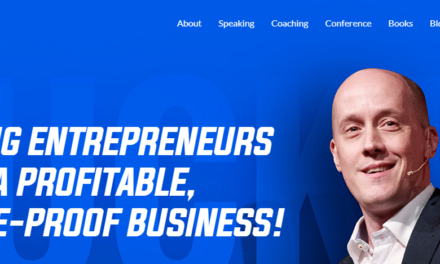Flip the script on social media.
Instead of helping build its business, use it to build your creator business.
That’s the advice from Tim Stoddart, who shared his lessons in cracking the social media code of business and monetization at the Creator Economy Expo.
Tim is the owner of Copyblogger and Recovery Local. He also is the CEO of the consulting firm Stodzy. He knows of which he speaks.
He grew his email list to 26K in a few months with a newsletter with an average 47% open rate and 2.6% click-through rate. In the first four months of 2023, he earned over $8.3K in newsletter sponsorships, saw $5.3K in monthly recurring revenue for Copyblogger Academy, and earned $9K a month from SEO consulting.
1. Know the ranking order of social for help: Tim built his email list through X and LinkedIn. But, he cautioned CEX attendees, that the impact of X began diminishing significantly in the spring.
He says LinkedIn continues to get better and sees Instagram as worth doing. But Facebook is worthless except for running ads, and TikTok is toxic. If creators want a dopamine hit, YouTube Shorts can bring big reactions but not necessarily a big email list.
2. Use valuable tools: Every creator should have a go-to toolkit. Tim’s go-to resources include Hypefury and ConvertKit.
He uses Hypefury to create and automate his social media. The free version is only for X, but its $15.83-a-month version automates for Facebook and Instagram, while the $40.83-a-month version also automates for LinkedIn (among other features.)
Tim says he spends about 15 minutes using the tool to populate his social media platforms for three or four days.
He uses ConvertKit to distribute his newsletter and uses its automation sequence for emails selling his other products.
3. Repurpose your content: Take your big-idea content and chop it into as many ideas as possible. Tim’s system? Write a blog article or newsletter. Turn it into a thread for X and/or a long-form LinkedIn post. Turn those ideas into tweets. Turn those tweets into carousel images for Instagram.
With social media, post as much stuff as possible because you have no idea what’s going to work or not,” Tim says.
4. Look at the social metric that matters: Impressions and views can be good, but they don’t really matter. What does matter are the views of your profile prompted by your social content. Tim says views of his profile or bio lead people to his email list – and that’s the only number that counts in getting social to work for your business.
5. Create a product evolution: Tim advocates for three tiers of content offerings – free, front-end products, and back-end products.
Free content – newsletters, podcasts, YouTube channels, etc. – can be monetized through sponsorships. He favors newsletters because those ads net a higher rate (i.e., newsletters average $45 per 1K audience members vs. YouTube videos that get about $15 per 1K viewers).
Front-end products are priced for volume. Online courses, ebooks, and digital content products usually fall into this category. They appeal to the masses. While they bring in lower revenue, they yield high profits – and average a $99 to $500 price point.
Back-end products, such as masterminds, consulting, or other personalized services, are priced for exclusivity. They appeal to your niche’s elite, bringing higher revenue and profit margins. Think $2K or more per transaction.
As you contemplate how to use Tim’s successful process in your business, I’ll leave you with his motivating words: “If I can do it, you can do it. I promise.”
About the author
Ann regularly combines words and strategy for B2B, B2C, and nonprofits, continuing to live up to her high school nickname, Editor Ann. An IABC Communicator of the Year and founder of G Force Communication, Ann coaches and trains professionals in all things content. Connect with her on LinkedIn and Twitter.










